On the morning of July 13, 2020, Christina Mendoza was wheeled into the delivery room for an emergency C-section. Her preeclampsia blood pressure was so high that doctors had ordered her not to even try to walk.
But Christina had more than just the birth of her third child on her mind as she was taken into delivery. Her phone had been pinging nonstop all day — although not entirely with messages of love and support from her family and friends. As the former chair of the California Statewide Inmate Family Council, Christina had been in charge of helping people stay in touch with loved ones behind bars and up to date on California Department of Corrections and Rehabilitation (CDCR) visitation policies — and now with the pandemic preventing prison visits, those families and friends were turning to Mendoza to air their concerns. Some berated her for not doing more to help them or posted their complaints on Facebook. Meanwhile, state prison officials came down on her for untimely responses. Seeking a bit of peace on what should have been a day of celebration, Christina shut down her social media accounts.
She understood the families’ distress at not being able to see their loved ones, because her own husband, Emmanuel Mendoza, is currently serving life without parole in Mule Creek State Prison. As Christina went into labor on that July morning, COVID-19 infection rates were surging in correctional facilities, and she had no idea when she would see Emmanuel again.
“I was freaking out inside,” she said. “Is he gonna die and my daughter is never gonna meet him? Is our daughter only gonna know him from a picture and from what I tell her?”
All over the world, the pandemic kept people from seeing friends and relatives in distant places or at high risk of illness. For people in prison, halting in-person visits meant shutting off one of their only connections to the outside world. Like schools and businesses adapting to pandemic safety requirements, prisons replaced in-person visits with video chats. California installed its system late November. But Christina and others in the state soon found that the new visitation process didn’t just prevent them from seeing their incarcerated loved ones in person — it often kept them from seeing them at all. The visitation scheduling application frequently crashed, and its limited capacity left families waking up before dawn to compete for sign-up spots. Some, like Christina, weren’t able to secure a time for weeks. And even when they were able to schedule a slot, their calls were limited to half an hour through the first five months, then an hour more recently — a stark change for families accustomed to in-person visits that sometimes lasted whole days or nights.
The CDCR told BuzzFeed News that it was working with its contractor, Global Tel Link, to resolve problems with the video call system. “With any technical upgrade, there can be implementation difficulties,” a spokesperson said.
As vaccination rates increase around the country, prisons in California have recently opened their doors to in-person visits again, with limited capacity and additional safety protocols. But for Christina and other advocates, the patchwork policies implemented during the pandemic revealed how visitation privileges are often left in the hands of CDCR staff, part of an ongoing shift that has increasingly restricted how often and for how long people can see their loved ones behind bars.
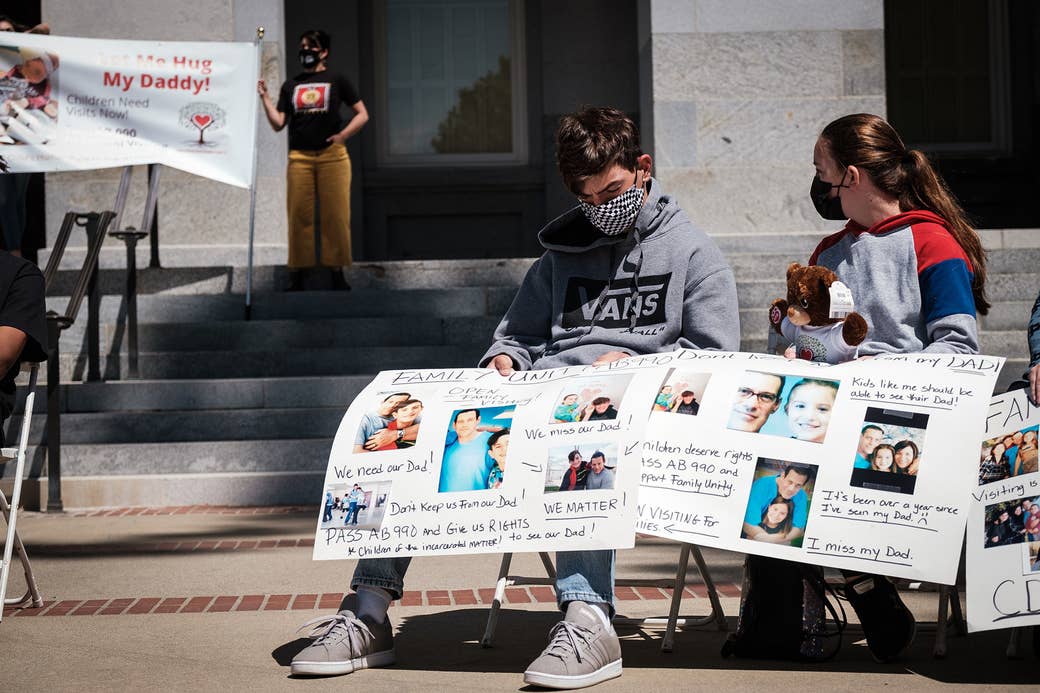
In the three decades since the statutory provision that granted incarcerated people the right to receive personal visits was deleted in 1996, California prison policies have gradually limited visiting opportunities and granted correctional officers wider discretion to punish people in prison by barring them from seeing visitors. In 2019, visitation capacity was so limited that more than a third of the 677,730 scheduled visits were canceled, according to CDCR documents obtained by BuzzFeed News. Fewer visits mean lower costs for the state: With no visits from March 2020 to January 2021, the CDCR calculated that it saved over $35 million, according to CDCR documents obtained by BuzzFeed News. Incarcerated people in California and around the country worry that some restrictions implemented during the pandemic could remain in place even as vaccination rates rise. Now, as the state rolls out its plan for reopening prisons to visitors, advocates and systems-impacted families across the state are calling for a new law that would reestablish visits as a right rather than a privilege.
“Our families are the first and foremost thing for rehabilitation,” said Emmanuel Mendoza, Christina’s husband. “That’s what keeps us wanting to keep pushing forward. I do it for my wife and my kids, and I know in order to do it for them, I have to do it for myself first.”
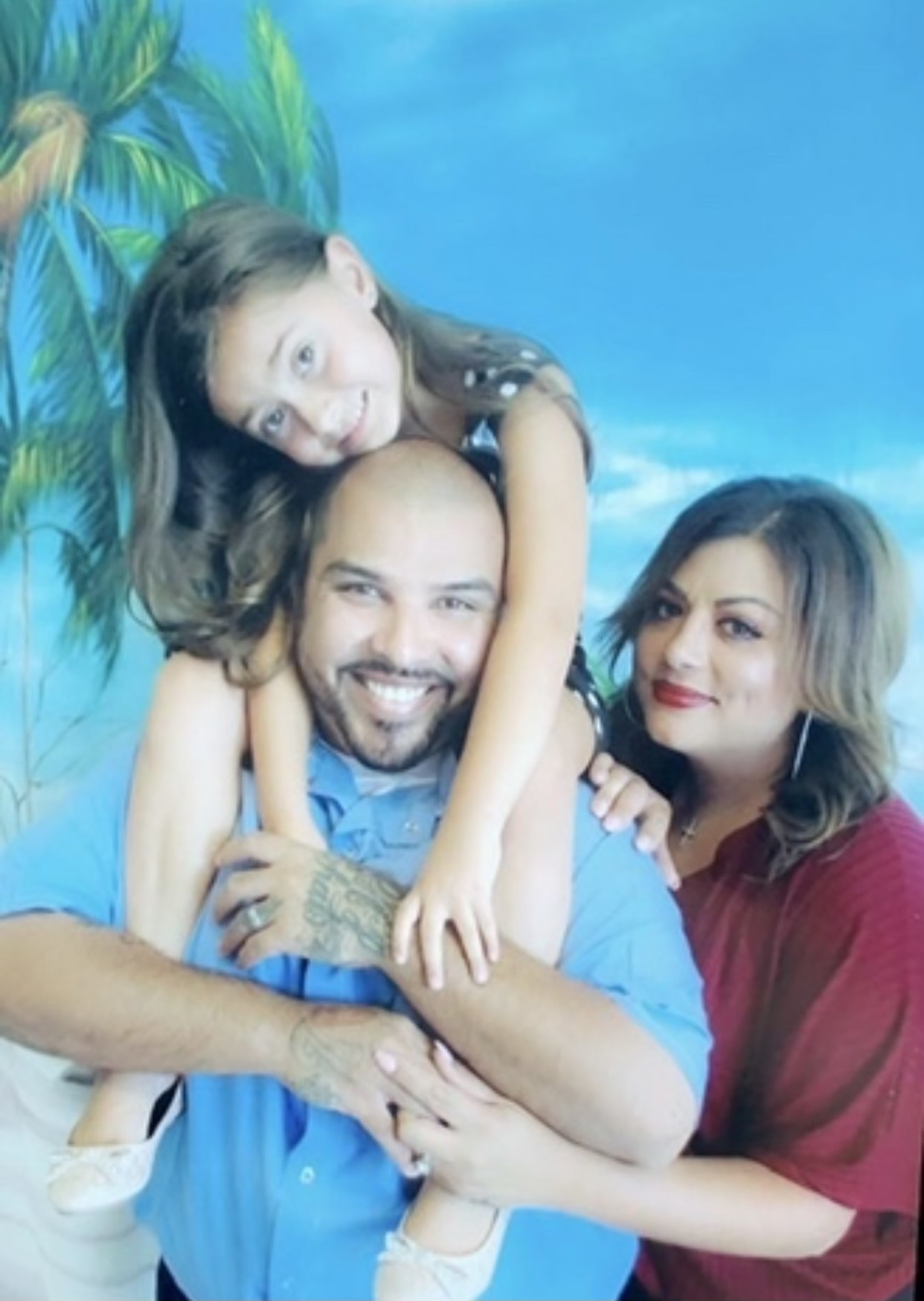
Emmanuel Mendoza’s father went to prison for possession of narcotics for distribution when Emmanuel was 11 years old. His father had been his best friend, a rock that kept him grounded, he said.
In his father’s absence, he turned to gang-affiliated family members to serve as role models. “Just a young, lost kid trying to fit into a place I thought I belonged,” recalled Emmanuel, who is now 29.
At 19, he took part in a burglary that went wrong when one of the other robbers shot and killed someone. Under the felony murder rule, which made him legally liable for the homicide because of his complicity in the burglary, Emmanuel was sentenced to life without parole.
He was locked up in Salinas Valley State Prison at first, and for years Christina would make the three-hour drive from their family home in northern California to the prison each weekend. There, she spent hours with Emmanuel and their two children, JayJay and Hali’a. They could hug and hold hands over a small table in a fluorescently lit room, playing marathon Jenga games, alongside several other families. The children scurried around an area filled with toys and a cushy blue mat, chose snacks from vending machines, and took pictures they could bring home with them.
Every 40 to 60 days, the family would be allowed to have an overnight family visit in a private room where they could cook, sit on the patio, share a bed, and watch movies together. It was on one of these visits that the couple’s third child was conceived.
When Christina told Emmanuel she was pregnant on their visit Christmas morning 2019, he was excited for their future family visits, and especially looking forward to feeling the baby move and following the progress of the baby’s growth.
Three months later, on March 3, 2020, Christina drove out to the prison for an overnight stay. Everything about it felt normal — there weren’t any temperature checks, and the correctional officers weren’t wearing masks but just gloves when they brought in the groceries Emmanuel and Christina were allowed to order. That night they watched the news together and wondered whether the coronavirus would ever reach the prison system. Little did they know it would be the last time they saw each other’s faces for months to come.
In the days after the CDC declared a pandemic on March 11, 2020, prisons around the country canceled their visits.
On March 30, 2020, CDCR and its prison phone service provider, Global Tel Link, began offering incarcerated people up to three days a week of free phone calls, a policy that remained in place until this year, when it changed to 15 free minutes every two weeks.
But in practice, the new policies were at the whim of prison staff, and guards sometimes refused to let incarcerated people use the phones on days when free calls were offered, Christina and Emmanuel said. Christina ended up having to pay for most of her calls.
“It's had a lot of effect on me, because there's been times where I don't have money to load onto the phone, but I want to hear from him,” Christina said. “And I try really hard not to use the credit cards I do have because I can't get into any more debt.”
By the third week of May, there were 1,000 confirmed cases in California state prisons, and the virus was spreading rapidly. A review conducted by the Office of the Inspector General found CDCR staff in some facilities initially failed to screen everyone who entered the premises, thermometers sometimes malfunctioned, and some correctional officers and healthcare workers didn’t adhere to mask and distancing directives. At Mule Creek State Prison, where Emmanuel is serving out his sentence, some prison staff didn’t require incarcerated people to return to their cell if they weren’t wearing a mask.
As case numbers continued to rise, Mule Creek went into full lockdown, a protocol that bars incarcerated people from accessing the phones. Christina was left on the outside wondering what was happening to Emmanuel, while he had no idea how his wife was coping with her third pregnancy. During one stretch, they went two weeks without any contact.
“Some people were able to call. Some people weren't,” Christina said. “You were just left in the dark. You had no form of communication. You couldn't see them. You couldn't talk to them on the phone.”
Eight months passed before the CDCR introduced what it called “video visits.” The department signed a $1.76 million five-year licensing agreement with Cisco Webex and began installing the video conferencing system at the end of November.
At first, video calls were allowed once every 30 days for 30 minutes. Families had to sign up for a time slot on a visitation scheduling application.
But with limited slots available, making an appointment for a video call seemed more like a bidding war, Christina said. She would set alarms for anywhere between midnight and 4 a.m. in order to try to get an appointment as soon as slots were released.
After the CDCR stopped taking video call appointments before 6 a.m., the system regularly crashed due to high volume, as people logged on simultaneously the minute the slots opened. Some complained it was so slow they had to spend hours refreshing their screen in search of an open slot.
“How are we supposed to concentrate at work w/ refreshing our devices every 5 mins ?” one woman, whose boyfriend is incarcerated under CDCR, wrote on Facebook, echoing dozens of other comments (she requested anonymity to protect him from potential retaliation). “First it was your 12-3 am circus depriving us of sleep, now it’s this 6 am bs that’s gonna have morning commuters swerving on the freeway trying to refresh…”
The first video visits in California state prisons were set for Thanksgiving weekend, but the entire system crashed immediately, leaving families unable to connect.
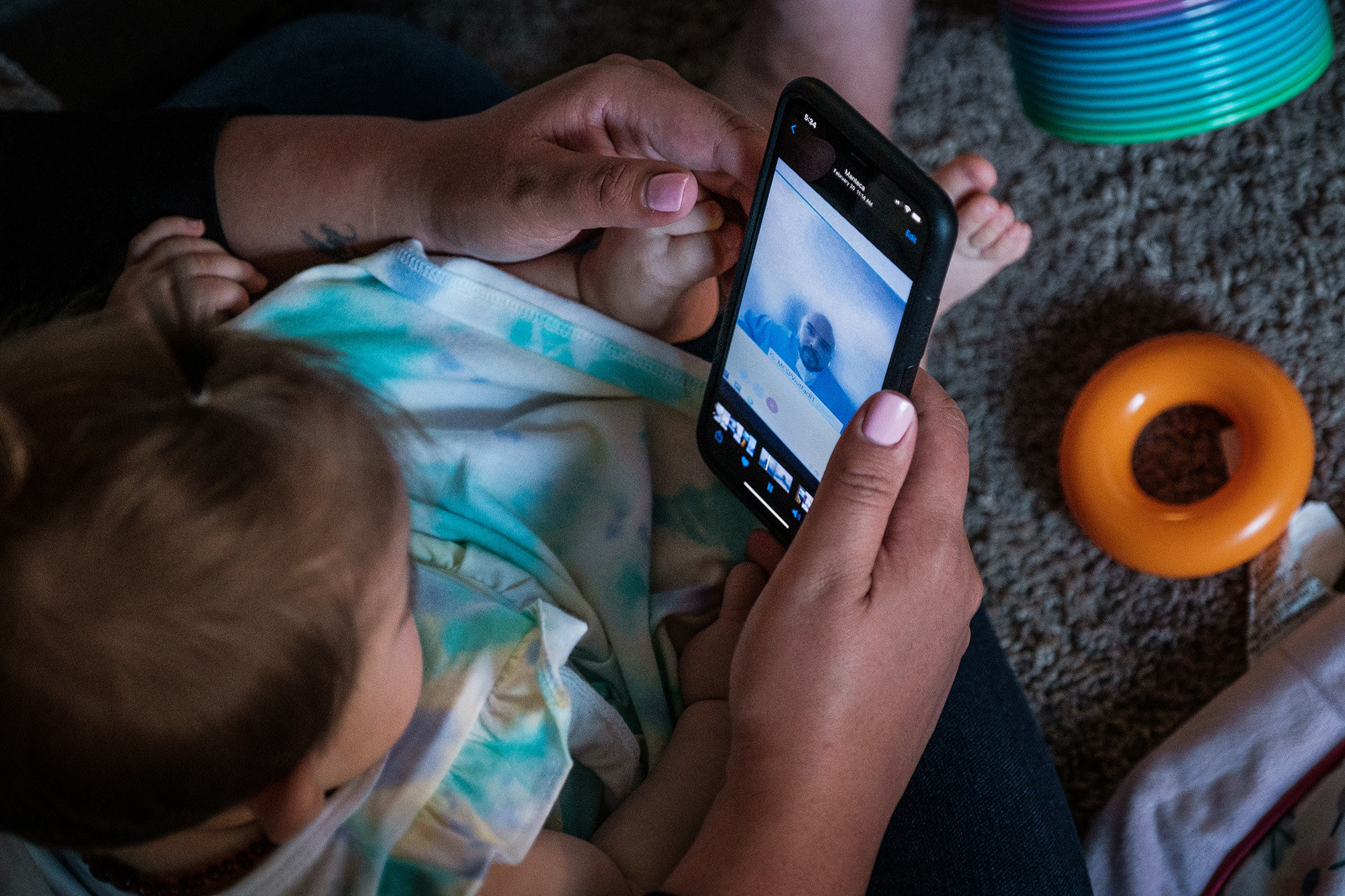
In late November, Emmanuel was diagnosed with COVID-19. His symptoms were so severe that he was hooked up to a breathing machine. He had mailed his positive COVID-19 test result to Christina on Dec. 2, and when she didn’t hear from him in seven days, she began to leave voice messages for the prison’s medical department. By the time the medical department finally called her back more than a week later, Emmanuel had already been well enough to call her himself.
“Families are a wreck waiting to find out what’s going on with their loved one,” Christina said. “I just kept thinking, Is my husband going to die before my daughter can even meet him? You have to start thinking of burial plans, funeral plans, cremation plans — when you just want to know if they’re OK.”
Emmanuel recovered in time for Christina to schedule their first video call in January.
Christina logged into the Cisco Webex system, holding her ID card up to the camera so that a correctional officer could verify her identity. She perched her laptop on a plastic drawer in the living room at home and placed their new daughter, Kehlan’i — now 7 months old — on her lap, so she could meet her father.
Wearing a white long-sleeve shirt with ruffles at the shoulder and matching floral headband, Kehlan’i tried to touch her dad through the screen. Emmanuel waved his hands around his face to keep her attention centered on him, and as he blew her a kiss and told her he loves her, Christina raised Kehlan’i’s hand to her mouth to blow him a kiss back.
As she was laughing, the screen went white. The video call was over.
By the time they set up their next video call in March, Kehlan’i was standing in her walker and chasing after the laptop. She was 9 months old, and her father had only seen her for just over an hour in total through these two calls.
But it’s the two older children who are struggling the most with the absence of their father’s physical touch, Christina said. Hali’a, 7, looked forward to the moments when she would see her father enter the visitation room, yelling out “Daddy!” and running across the room to hug him.
Now, every time her father is mentioned she bursts into tears and asks when she will see him again, Christina said.
“It’s a trickle effect because when she cries, then my son cries because she’s crying, and then I’m crying because they’re crying,” Christina said. “The only one that is not crying is the baby because she doesn’t know any better.”
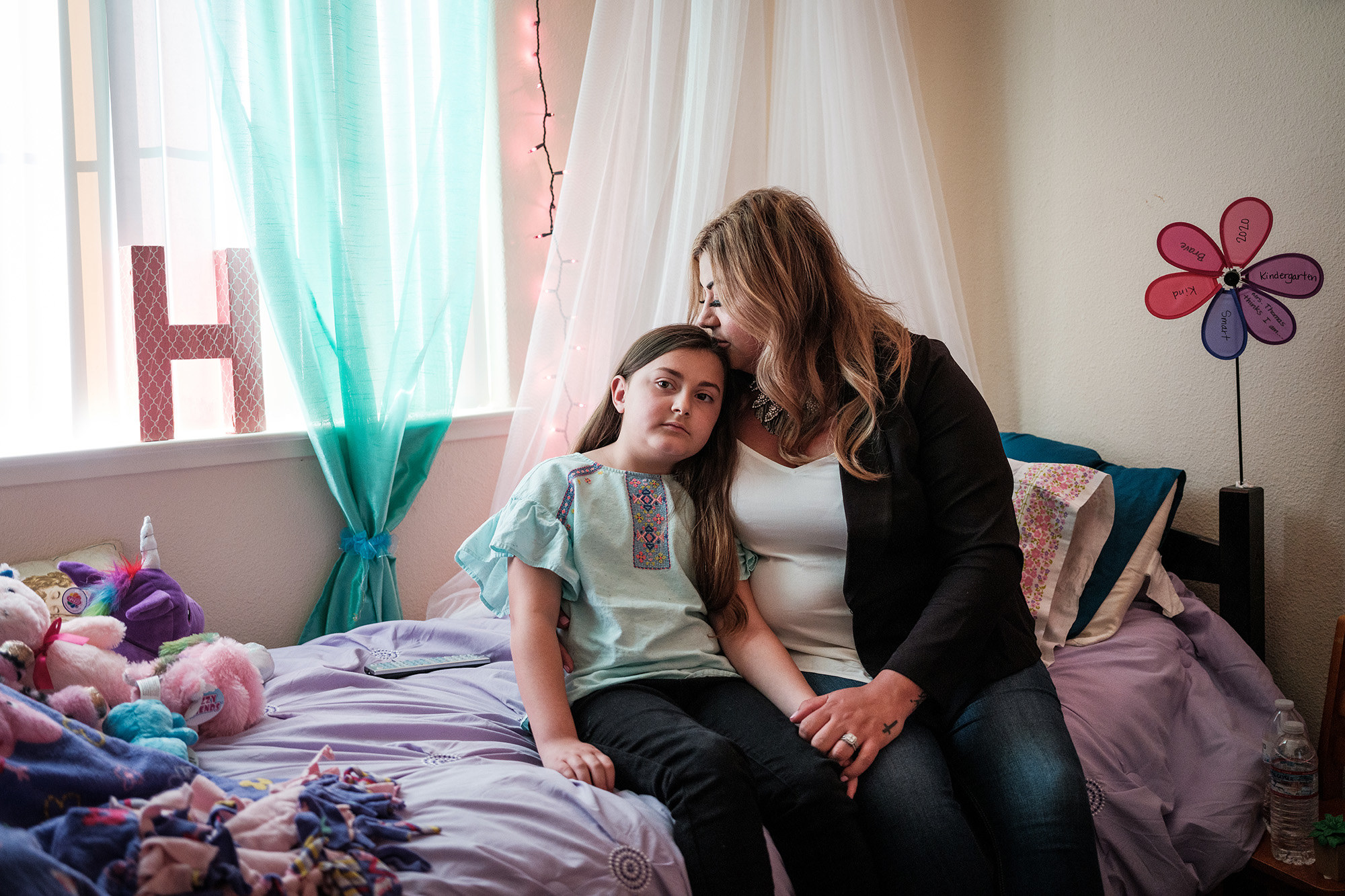
In 1989, as crime rates reached record highs across the country, the US Supreme Court ruled that incarcerated people had no constitutional right to “unfettered visitation.” California maintained that the incarcerated population had the right to visitation until 1996, when former Penal Code § 2601 (d) was deleted after the state legislature passed a bill allowing prison administration to place restrictions on visitation privileges. The new law, which was supported by the California Correctional Peace Officers Association, aimed to give prison officials more control over incarcerated people’s activities.
Over the following years, CDCR reduced the number of people allowed on each visit, expanded the reasons a visit could be denied, and limited visitation days to Saturday, Sunday, and four holidays. Though the state piloted a program that provided a third weekly visitation day in 2006, it was cut from the budget three years later.
Even when families are able to schedule visits, they’re not always able to see their loved one. Incarcerated people can have their visiting privileges taken away for any reason — even ones not related to visitation violations. Some families travel hundreds of miles to a facility, only to be sent home because the block their loved one is housed in has suddenly gone into lockdown.
In February 2020, after Beneé Vejar was blocked from visiting her loved one due to a minor infraction, she reached out to Legal Services for Prisoners with Children, an advocacy group that helped her organize a campaign calling for protections to prison visits. The movement picked up steam during the pandemic and eventually spawned the 2021 Family Unity Bill, or AB990, which would make visitation a protected civil right and prevent correctional officers from denying visits as punishment unless a violation is directly related to a visit.
The California Correctional Peace Officers Association, the union representing prison guards, wrote a letter opposing the bill, claiming that it’s “problematic that, without exception, visitation cannot be denied for any disciplinary action or status that occurred outside of visitation.”
The CCPOA declined to respond to a list of questions for the story.
The bill passed through the Assembly floor in June, and it now awaits a vote in the Senate.
“We want to help improve the lives of those who are incarcerated and to help them get on track for when they are released,” said state Assembly Member Miguel Santiago, who is championing the bill. “You have to start at the very basic and fundamental human rights, which is the ability to have visitation with loved ones.”
Two months ago, Emmanuel became the first person in his family to complete college, earning an Associate of Arts degree. While behind bars, he has worked as a welder’s clerk, found his spirituality by regularly attending religious programs and services, and participated in and led rehabilitation programs. He is currently waiting to hear a judge’s decision from an ongoing appeal he has had pending since 2018.
Isolated and confined to a cell most of the time for the past year, Emmanuel follows the progress of his youngest daughter, Kehlan’i, through a collection of photos, each one marking her rapid growth.
“I have lost so much time with my kids that I cannot gain back,” Emmanuel said in his clemency petition.
The absence of family visits has taken an emotional toll on him and many other incarcerated people.
Over the summer, Emmanuel grew close to a man whose daughter gave birth a month before Christina had Kehlan’i. The two men would bond over conversations about upcoming family visits. His dormmate’s excitement to hold his granddaughter one day mirrored his own eagerness to finally meet his daughter.
Then, about four months ago, that dormmate killed himself.
Since the lockdown began, Emmanuel — has noticed a growing despair in the demeanors and faces of many of his dormmates.
Normally, when an incarcerated person would earn a degree or certificate, the facility programming would hold a small ceremony for their families to attend and receive an extra day of visiting. But this, too, was prohibited during the pandemic.
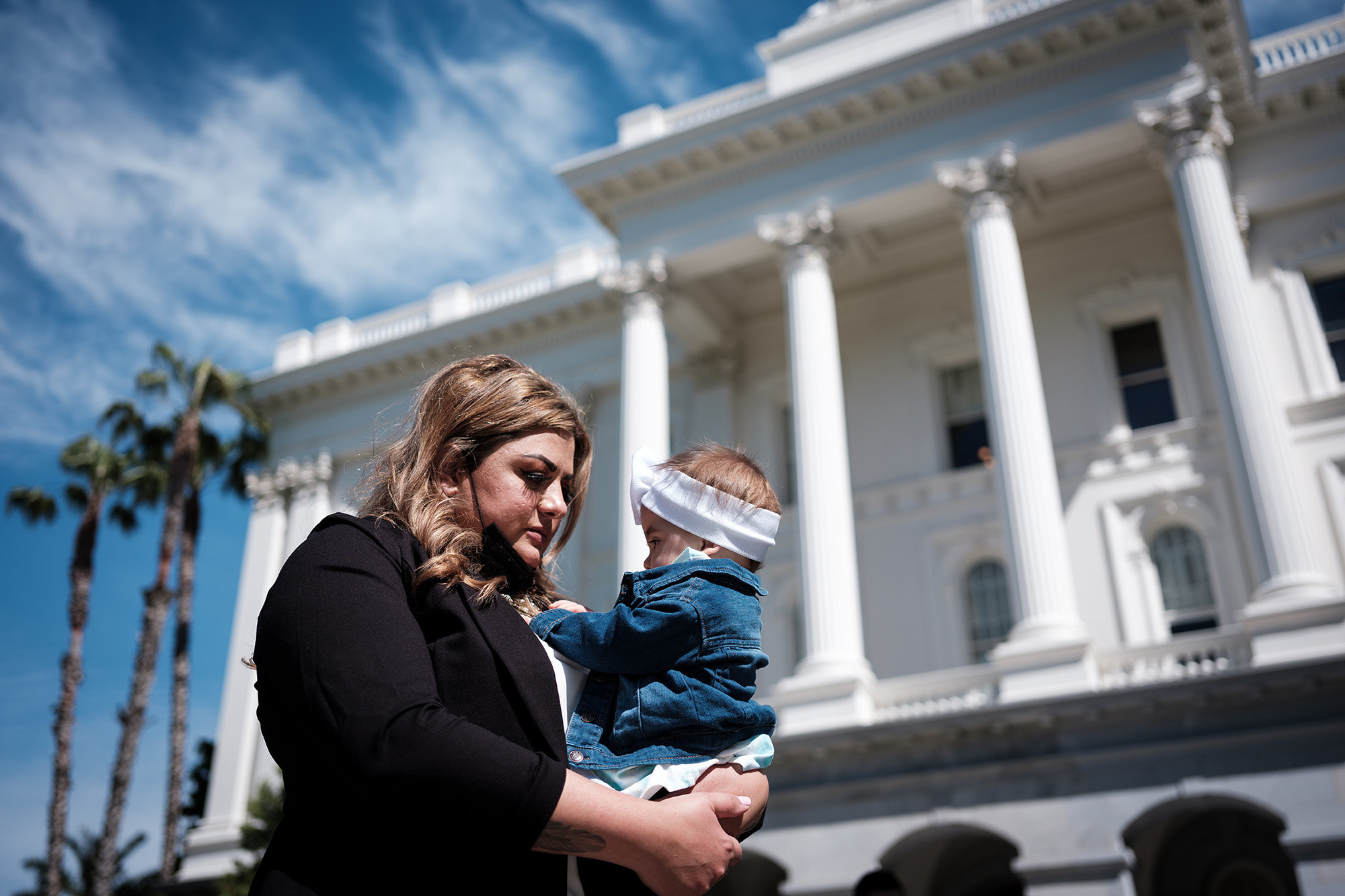
On April 17, sitting at opposite ends of a 6-footlong craft table in Mule Creek State Prison’s visitation room, Christina and Emmanuel were face-to-face for the first time in more than a year. In between them on the table was a water bottle and a paper with the list of rules they were expected to follow. When the CDCR reopened visitation on April 10, it allowed only one guest per visit.
During the one hour they were given, Christina and Emmanuel were not allowed to kiss each other and only allowed to touch each other twice — once upon arrival, once upon departure — unlike visits pre-shutdown, where they were given the freedom to hold hands as long as they wanted. Unlike previous visits, there were no children playing with toys or eating snacks from the vending machine.
Now, with 40% of staff and 65% of incarcerated people at the state’s prisons vaccinated, CDCR began to allow overnight family visits starting on June 7.
On that day, Christina took her daughter, 11 months old, for a three-day overnight stay at Mule Creek with Emmanuel. Although Kehlan’i had been familiar with her father’s face from video visits and pictures and recognized her father’s voice in association with the Global Tel Link operator, Christina was worried that the infant would be slow to warm up to her father. But the two clicked instantly.
Kehlan’i said “dada” for the first time that day. And for Christina, it was the first time she had someone else around to change the diaper or get the bottle in the middle of the night.
The Mendozas got to cook with preordered groceries for Kehlan’i on a stove, feeding her as she sat in a high chair in the kitchen of their two-bedroom unit, which had a brand-new prison-provided playpen similar to the one they had back home. They walked her around the yard to look at flowers and other children playing.
But that same week, two other blocks at the prison contracted a total of 18 new cases of COVID-19 and went back to phase one — classified as an outbreak, meaning that the people incarcerated there would get no more in-person visits and no more phone calls until they contained the virus. ●
